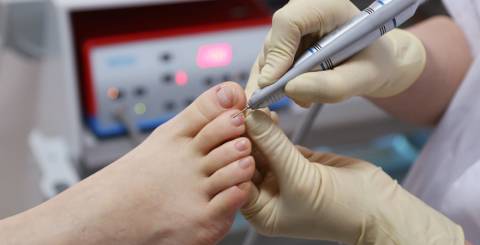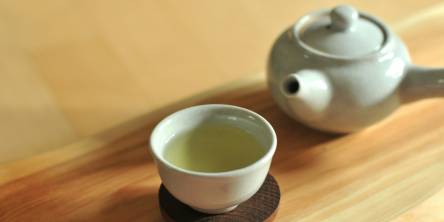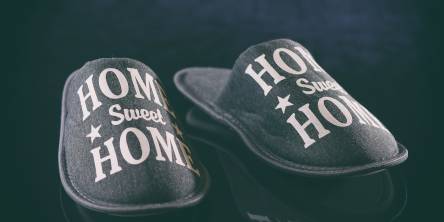What is the Most Common Problem Treated by a Podiatrist?

You might think that foot problems vary greatly and each patient presents a unique case to a podiatrist, but there is one issue that stands out as particularly common. Have you ever wondered what ailment brings many individuals through the doors of a podiatrist's office more than any other? The answer may surprise you, as it affects a vast number of people and can significantly impact their daily lives.
Keep reading to uncover the most common issues frequently addressed by podiatrists, illuminating a condition that resonates with many. When it comes to managing these prevalent foot conditions, many podiatry clinics, including Align HC stand out, providing specialized care and tailored solutions for every patient.
Key Takeaways:
- Bunions, corns, calluses, ingrown toenails, and plantar fasciitis are common problems treated by podiatrists.
- Podiatrists manage foot issues with orthotic inserts, proper footwear, trimming, and various treatments.
- Foot problems like hammertoes and flat feet also require podiatric care for pain relief and gait improvement.
- Prevention through good foot hygiene, regular foot checks, and early intervention is key to avoiding severe foot conditions.
Common Foot Problems Overview
When it comes to common foot problems, several issues can affect your feet, causing discomfort and inconvenience. One prevalent problem is bunions, which are bony bumps that form on the joint at the base of your big toe. These can be painful and make it challenging to find comfortable shoes.
Another common issue is corns and calluses, thickened areas of skin that develop due to friction or pressure. They can cause pain and may need professional treatment to alleviate it. Ingrown toenails are also a frequent concern, occurring when the edge of a toenail grows into the skin instead of over it. This can lead to redness, swelling, and infection.
Additionally, hammertoes, where toes bend abnormally at the middle joint, and flat feet, which can cause pain and affect your gait, are other common foot problems that many individuals face. Proper footwear, foot exercises, and seeking timely medical advice can help manage and prevent these issues.
Plantar Fasciitis
Plantar fasciitis, a common podiatry problem, is characterized by inflammation of the thick band of tissue that runs along the bottom of your foot, causing heel pain and discomfort. This condition often manifests as stabbing pain with your first steps in the morning. The discomfort can improve during the day but may return after long periods of standing or getting up from a seated position.
Several factors contribute to plantar fasciitis, including excessive standing or walking, improper footwear, high-impact activities, and tight calf muscles. To alleviate symptoms, podiatrists may recommend stretches, orthotic inserts, or night splints to keep the foot flexed during sleep. They might also suggest icing the affected area, wearing supportive shoes, and avoiding activities that exacerbate the pain.
In severe cases, corticosteroid injections or physical therapy may be necessary. However, most individuals find relief through conservative treatments. If you suspect you have plantar fasciitis, seeking prompt evaluation and following the recommended treatment plan can help alleviate discomfort and prevent the condition from worsening.
Ingrown Toenails
Experiencing sharp pain and tenderness in your toes? Ingrown toenails are a common issue many people face and can be quite uncomfortable. When the edge of a toenail grows into the surrounding skin instead of over it, it can lead to redness, swelling, and even infection. To better understand this condition, here are some important points to consider:
- Improper trimming: Cutting your toenails incorrectly can increase the risk of ingrown toenails.
- Tight footwear: Wearing shoes that are too tight can put pressure on your toes, leading to ingrown toenails.
- Genetics: Some individuals are more prone to ingrown toenails due to inherited traits.
- Injury: Trauma to the toe area can sometimes cause toenails to grow improperly.
- Poor foot hygiene: Neglecting proper foot care can contribute to the development of ingrown toenails.
If you suspect you have an ingrown toenail, it's essential to seek help from a podiatrist to prevent further complications and alleviate discomfort.
Bunions
Bunions are bony bumps that form at the base of the big toe joint. They develop when the big toe leans towards the second toe, causing the metatarsophalangeal joint to stick out and become prominent. This condition can be painful, especially when wearing tight or narrow shoes that put pressure on the bunion.
One common symptom of bunions is redness, swelling, or soreness around the big toe joint. As the bunion progresses, the skin over the bump may become thickened and callused. In severe cases, the big toe may even overlap or tuck under the adjacent toe, leading to further discomfort and difficulty walking.
To alleviate bunion pain and prevent them from worsening, it's essential to wear comfortable, wide-toed shoes and avoid high heels. Orthotic shoe inserts can also help redistribute pressure on the foot and reduce bunion discomfort. In some cases, surgery may be necessary to realign the joint and correct the bunion deformity.
Corns and Calluses
Wondering why corns and calluses develop on your feet and how you can effectively manage them? Corns and calluses are common foot issues caused by repeated friction or pressure on the skin. Here's what you need to know to tackle these pesky problems:
- Footwear: Ill-fitting shoes are a common culprit. Opt for comfortable, well-fitted footwear to reduce friction.
- Moisturizing: Keeping your feet moisturized can help prevent the buildup of hard skin that leads to corns and calluses.
- Pumice Stone: Gently exfoliating the affected areas with a pumice stone can help smooth out rough skin.
- Padding: Consider using protective padding to alleviate pressure on sensitive areas and prevent further development of corns or calluses.
Consult a Professional: If corns or calluses are causing you pain or discomfort, a podiatrist can provide treatment options such as trimming or orthotic inserts to alleviate the issue effectively.
Can Podiatrists Prescribe Medication for Foot Conditions?
Yes, podiatrists can prescribe medication for foot conditions. They are trained to diagnose and treat various foot ailments, and medications may be part of their treatment plan to help alleviate pain and address underlying issues.
Are There Any Natural Remedies for Treating Bunions?
To address bunions naturally, consider options like toe separators, bunion pads, and proper footwear. Stretching exercises and ice packs can also help. Consult a podiatrist for personalized guidance on managing bunions effectively.
How Often Should I Replace My Orthotic Inserts?
You should replace your orthotic inserts every 12-18 months, as they can lose their effectiveness over time. Regularly changing them ensures proper support for your feet and prevents potential discomfort or pain.
Can Corns and Calluses Be Prevented?
To prevent corns and calluses, wear proper-fitting footwear, use cushioned insoles, and keep feet moisturized. Regularly exfoliate rough skin and avoid excessive pressure on feet. If issues persist, seek advice from a podiatrist for personalized care.
Are There Any Exercises or Stretches That Can Help With Plantar Fasciitis?
To help with plantar fasciitis, try calf stretches, toe curls, and towel stretches. These exercises can improve flexibility and strengthen your foot muscles, easing the discomfort associated with plantar fasciitis. Stay consistent for results.
Similar Articles
Discover how longevity clinics use key biomarkers to assess ageing, improve health, and guide personalized wellness strategies for a longer, healthier life.
Halitosis, sometimes known as foul breath, affects millions of individuals worldwide and can cause humiliation, influencing everyday interactions and confidence.
In the modern world, maintaining good health often feels like a constant challenge. Between busy lifestyles, sedentary habits, and lack of motivation, many people find it difficult to stay consistent with exercise, diet, or wellness practices.
Learn how UV toothbrush sanitizers use UV-C light to kill 99.9% of bacteria, viruses, and fungi—backed by science for better oral health.
In the past, the experience of soaking in a hot tub or relaxing in a sauna was something reserved for spas, health clubs, or luxury retreats
Learn practical strategies for nurses to advance careers while maintaining patient care, managing time, and supporting well-being in today’s fast-paced healthcare.
Learn 6 key benefits of a juice cleanse, from boosting energy and hydration to clearer skin, easier digestion, and healthier eating habits.
Discover 5 simple ways to enjoy green tea daily for better taste, more nutrients, and lasting wellness benefits for your body and mind.
Discover how house slippers support foot health indoors—combining warmth, protection, and support—with insights from podiatrists and real‑world studies.









